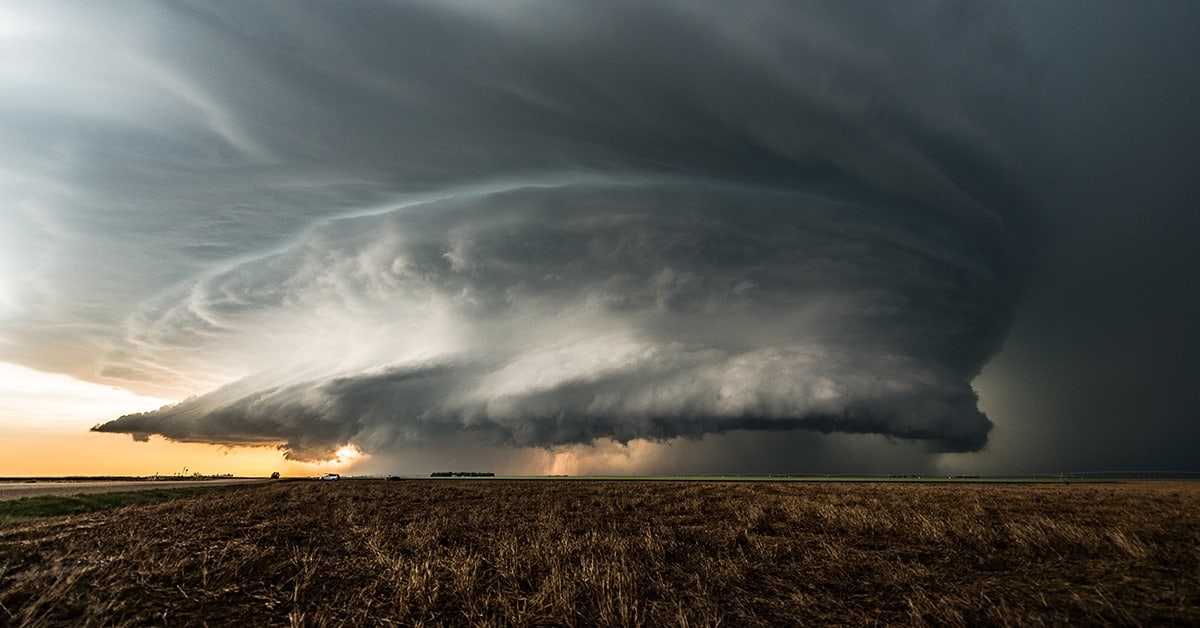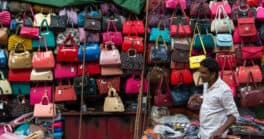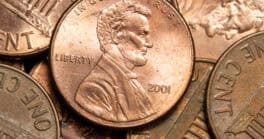Private and public debt levels—combined with rising interest rates—are clouding the economic horizon.

A dissolute British aristocrat in Ernest Hemingway’s novel The Sun Also Rises, when asked how he became bankrupt, famously answers, “Two ways. Gradually, then suddenly.” That could also describe the financial inflection point the world may be reaching today. Governments and corporations borrowed on a wartime scale to meet the challenge of the Covid-19 pandemic. A large slice of that debt will need refinancing at the much higher interest rates in the wake of central bank actions to stem post-pandemic inflation. Governments from Tokyo to Washington face rising expenditures for pension and health benefits, and voters are not inclined to approve either benefit cuts or tax increases as a solution.
Developed-economy debt plus inflation is constricting credit for developing countries, some of which are already enveloped in a wave of post-pandemic defaults. All this as the whole world needs to mobilize a new mountain of capital to slow climate change or adapt to its most dire impacts.
“There is no historical precedent for the current global debt situation,” says Emre Tiftik, director of Sustainability Research at the Institute of International Finance (IIF). “We are in uncharted territory.”
A few sobering statistics to underline the point: Global debt has increased by $45 trillion, or 17%, since the pandemic hit in early 2020, the IIF calculates. Even after a slight decline in 2022, that makes global debt now three times the size of the world economy. Emerging markets, led by China, accounted for almost $25 trillion of that bulge since 2019. Sovereign states’ interest payments jumped by 20% last year to $1.4 trillion, says James Cielinski, global head of Fixed Income at Janus Henderson Investors in London. That figure could double by 2025 under the current interest rate outlook.
Soaring rates have pushed one in seven US corporations into “zombie” territory—meaning their debt service exceeds profit—according to the IIF. Chinese corporate debt relative to GDP is nearly double the US level, and rising again as the world’s second-largest economy emerges from its “zero-Covid” lockdown. More than half the world’s low-income countries are “in debt distress or at high risk of debt distress,” according to the International Monetary Fund. Nine developing nations have already defaulted over the past three years.
When, how and where we lurch from “gradually” toward “suddenly” is anything but clear, however. “The idea that we’re at an inflection point has a great deal of credibility,” Cielinski says, “but that point could go on a lot longer than you would expect.”
The biggest sovereign debt gorgers over the past few years have been the governments of the three biggest global economies: the US, China and Japan. That’s a big departure from past cycles. Emerging markets fighting to peg weak currencies to the dollar drove debt crises in the 1980s and 1990s. The proximate cause in 2008 was consumer overleveraging, particularly by US homeowners, whose bad credit spread worldwide thanks to the magic of mortgage-backed securities.
It’s a good thing that supersovereigns are in the lead this time, because they have the deepest resources to pay it back. It’s a bad thing because if one of them fails, no one else on the planet can step in to mop up the mess. US government debt—including federal, state and local jurisdictions—grew from 108% to 128% of GDP during the peak pandemic year of 2020, Federal Reserve data show, before subsiding to 119% as a post-Covid growth spurt and inflation lifted nominal GDP and tax collections. But that shot in the arm is wearing off.
The US federal government alone ran a $1.4 trillion deficit last year, about 5.5% of GDP—Argentina, a byword for leaky fiscal policy, did much better at 3.8%. The US political landscape offers no easy path forward. Republicans refuse to consider tax increases or cuts in military spending, and Democrats vow no cuts to pensions or health care. Recent theatrical haggling over the national debt ceiling had negligible longer-term impact.
All the same, the prospect of the US Treasury going broke seems remote now. “We are at the beginning of a very classic late bigcycle debt crisis, when you’re producing too much debt and you also have a shortage of buyers,” Ray Dalio, chief investment officer of Bridgewater Associates, said at a conference in June. “There’s a supply/demand issue for that debt,” he continued.
“If we continue down this path, in terms of what’s likely over the next 5-10 years, you reach the point that the balancing act becomes very difficult.”
Private Sector Resilience
Corporate debtors in the US and most other places ex-China look reasonably resilient, zombies notwithstanding, because they locked in abundant financing during the long stretch when rates were near zero. “The corporate side is very similar to homeowners,” says Jack McIntyre, portfolio manager for Global Fixed Income at fund manager Brandywine Global. “They fixed in a lot of debt and don’t have to worry about refinancing in the short term.”
Yes, debt burdens are getting heavier: Interest costs at US companies jumped 22% year-on-year during the first quarter of 2023, Bloomberg reports. But corporates came into the current crunch with debt “coverage” at 20-year highs, notes Richard Familetti, chief investment officer for US fixed income at SLC Management, which is linked to Canadian insurer Sun Life. Defaults and downgrades are in line with historic averages.
“Corporate credit risk in the USA is kind of OK,” he concludes. Another bright spot is household debt, which sparked the global financial crisis 15 years ago. That metric dropped from 98% to 75% of GDP in the US since then, and remains subdued around the world—with a few exceptions like Australia and Canada.
“Consumers and consumer lenders have been relatively conservative since 2008,” says Terence Chan, a Melbourne-based senior researcher for S&P Global. China’s debt landscape presents a reverse mirror image to that of the US. Official central government debt is low while leverage piles up among corporations (many state owned), and local and regional governments.
Worries about the latter are rising at the moment. Local and regional borrowers now owe $23 trillion, by Goldman Sachs’ estimate. Most of this is held by so-called local government financing vehicles (LGFVs), whose finances are entirely opaque.
Local authorities’ revenue engine, land sales to property developers, meanwhile has sputtered. China’s builders sustained a body blow as the pandemic’s impact coincided with a Beijing-orchestrated leverage crackdown, and recovery looks halting. “Demand won’t come back nearly as it was over the past 20 years,” predicts Michael Hirson, head of China research at New York–based 22V Research. “Property has permanently shifted down to a lower gear.”
China’s central government, which racked up a $402 billion current account surplus in 2022, likely has the means to bail out any cash-strapped regions this year, but not to put the problem off indefinitely. President Xi Jinping and his team are wary of signing blank checks that could subsidize provincial government “shenanigans” that allow hidden debt to grow, Hirson cautions. He expects Beijing to start letting some of the LGFVs default late this year or early next, running the risk of financial contagion. Regional borrowers account for some 40% of China’s domestic bond market.
China theoretically has room to raise taxes. Government at all levels takes in about 20% of GDP, compared to an average 34.1% in 2021 for advanced member countries of the Organization for Economic Co-operation and Development. Only 10% of Chinese pay income tax, and none pay property tax. Beijing seems reluctant to move on this front too, despite the absence of organized political opposition.
That leaves Xi & Co. no easy way to reverse a worrying debt trajectory, but also some time—probably—to figure it out. “The sky isn’t falling this year, but the next few years will be important,” Hirson warns.
Japan played its part in the great pandemic-era splurge, maintaining the distinction of government debt champion with more than 260% of GDP. But the third-largest economy inhabits a fiscal and monetary world of its own, with interest rates still near zero and a captive domestic universe of bond buyers.
Investors in Japan Inc. are more worried about idle corporate cash balances than excessive leverage. Don’t expect a global debt meltdown to start there.
The eurozone, after its brush with death during the Greek debt crisis a decade ago, remains the most sober of the major economies. Government debt is lower now than in 2014. Banks, kept on a tight regulatory leash, have so far avoided the spasms affecting regional institutions in the US.
The European Union in 2020 proposed to issue a series of joint bonds—€806.9 billion worth for a pandemic recovery fund—with talk of a second round aimed at energy transition. That show of unity decreases chances of a national meltdown in Italy or another high-debt Southern European member of the EU, Cielinski says.
“Politically, people feel like the union is very strong,” he adds. “Any future problem will be more a eurozone problem.”
Big Challenges for Economies
Poorer countries don’t have the luxury of dawdling while gradually going bankrupt. “Debt vulnerabilities are primarily concentrated in low-income countries, many of which no longer have access to international debt markets,” notes the IIF’s Tiftik.
Most emerging markets, China excepted, lacked the means for big new expenditures to offset Covid-19. But the pandemic walloped their revenue, as exports plunged and tourism evaporated. Rocketing post-pandemic interest rates hiked their borrowing costs, if they could borrow at all. A US dollar that rose over 30% in value over the past decade hasn’t helped either.
Defaults have so far been confined to the global economy’s fringes: countries like Sri Lanka, Ecuador, Zambia and Ghana. (Russia, Ukraine and Belarus are special cases, stemming from the war and related sanctions.) But other large and strategic nations—Nigeria, Egypt and Pakistan— have been entering the debt spotlight this year. Nuclear-armed Pakistan’s fiscal outlook appears the most volatile, given a concurrent political struggle between deposed Prime Minister Imran Khan and the influential military, plus recurring natural disasters.
Floods and fires driven by climate change will compound financial pain across the developing world, predicts Ulrich Volz, director of the Centre for Sustainable Finance at the University of London. Back in 2009, developed nations pledged to funnel $100 billion a year by 2020 to developing states to offset climate change. The rich countries have fallen far short—collateral damage in part from rising debts at home.
While corporate debt remains largely manageable, a few pockets of the private economy could wreak systemic havoc. One is commercial real estate, which remains in a funk as shoppers and office workers cling to pandemic stay-at-home routines. “Office occupancy rates in New York were around 50% of their pre-pandemic level in May; and as of March, office occupancy in London still stood at around 26.5%, down from pre-pandemic levels of 60% to 80%.”
That spells a lot of at-risk credit, which in the US is concentrated in already-troubled regional banks. About one quarter of all US banks with assets below $50 billion exceed regulatory thresholds for commercial real estate and/or construction loans, according to a recent study by industry data provider Trepp. That’s unwelcome news after three notable collapses this year: Silicon Valley Bank, Signature Bank and First Republic Bank.
“Commercial real estate portfolios, particularly loans backed by office properties, face challenges should demand for office space remain weak,” Federal Deposit Insurance Corporation (FDIC) Chair Martin Gruenberg warned following release of the FDIC’s quarterly report in May.
Any pullback by regulated banks, however, could boost more market share for private credit, an industry that has grown from zero before 2008 to more than $2 trillion globally, according to the IIF. “We expect ongoing pressures on US regional banks will facilitate the continued expansion of private debt markets,” Tiftik and colleagues write in May’s Global Debt Monitor.
Upward of $2 trillion in opaque, illiquid financial commitments is enough to raise at least a yellow flag under current volatile conditions, S&P’s Chan argues: “Private credit is one of those areas that could be exposed if everyone rushes for the door.”
At the very least, the prospect of the world’s leading governments borrowing ever-more trillions at elevated—or, if you prefer, normalized—interest rates is likely to mean tighter money for everyone else, despite any magic that global finance can bring to bear.
CFOs in the private sector will have to focus more on avoiding zombie status and probably a little less on funding expansion or productivity improvements.
“My advice to CFOs is to carry a higher cash balance than usual and accept the 5% the US Treasury is offering,” SLC Management’s Familetti says.
A dose of capital discipline might not be a bad thing in some respects: trimming outlays for ghost cities in China, say, or virtual-reality headsets from Silicon Valley.
But writ large, the world will still need to invest more to save itself from increasingly severe climate dislocations: an average of $3.5 trillion a year more through 2050 (“worth about 2.8% of global GDP between 2020 and 2050”), according to a January 2022 McKinsey report on netzero carbon emissions. China also needs resources to keep the promises it’s already made, pensions and health care for aging populations, education, and infrastructure upgrades to meet the needs of a changing economy.
Across the globe, a “Great Reset” of attitudes is needed from policymakers and citizens alike, Chan and colleagues argue in a January report. “Avoiding the hell of a debt crisis may require ensuring only productive new debt is deployed, writing down unproductive debt, curbing overconsumption and restructuring loss-making enterprises,” the researchers note. “These actions may not be popular.” Indeed, there will be no easy ways out.



